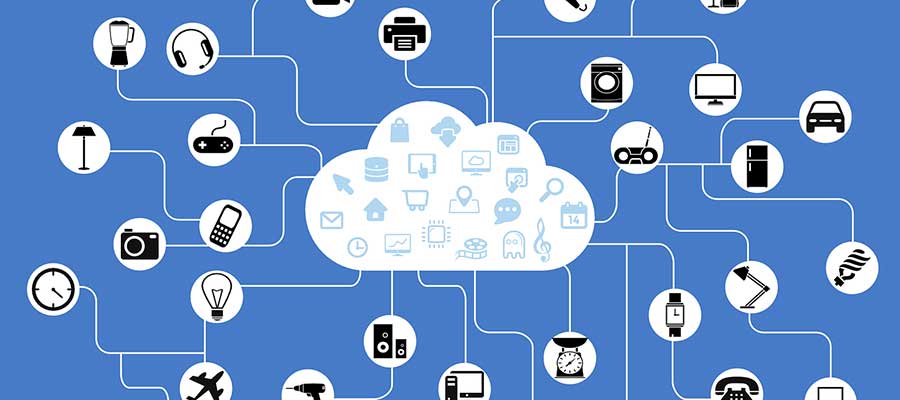
Image by jeferrb from Pixabay
IoT, the Internet of Things, was once thought to be the way of the future. Well, the future is now and IoT is a big part of our lives.
IoT is a network of devices that autonomously transmit and receive data and signals among each other and with central control systems, all via the Internet. Today IoT-based solutions are common in many sectors, from healthcare to agriculture, manufacturing, smart cities, retail, and many more.
A Short History of IoT
Kevin Ashton of MIT was the first person to coin the term Internet of Things in a presentation to Proctor and Gamble in 1999. The idea, however, has been around since the 1970s with names like “embedded internet” and “pervasive computing.”
The first recorded example of the use of IoT technology took place on the campus of Carnegie Mellon University in the early 1980s. The Internet was still in its infancy and a bunch of engineering students decided to hook up a soft drink dispensing machine to the Internet to let the company know automatically when the machine was out of soft drinks. Little did they know at that time how far and fast their new technology would spread.
IoT has brought cutting-edge technologies such as Machine to Machine (M2M) and Supervisory Control and Data Acquisition (SCADA) to new levels. By sharing real-time data from M2M sensors and SCADA systems with centralized control and analytics centers in remote locations, IoT drives real value in the world of business. [1]
What follows are some examples of different kinds of IoT networks but, to be honest, the possibilities are only limited by your imagination.
Simple IoT Sensors
A pacemaker that detects and reports heartbeat irregularities to the patient, hospital or physician is, in fact, an IoT sensor. Another example of simple IoT sensors are farm animal management. Whether collars with an embedded chip or biochip transponders injected under the animal’s skin, these sensors track and transmit the animal’s location as well as its body temperature and other vital signs.[2]
IoT in the Home and in Building Management
Amazon’s Alexa is the queen of smart home IoT. If your home systems—ights, music, cams, television, heating/air conditioning units—are IoT-enabled, you can control them with voice commands via Amazon’s Echo smart speakers. Not only can you turn these items on and off, but you can decide what music to listen to, which shows to watch, and what temperature to set on a room by room basis. Google Home promises to be compatible with an even wider range of devices.
These IoT capabilities are even more significant when it comes to managing residential and commercial buildings. Think back to the turn of the millennium, less than 20 years ago. If you wanted to light up hallways and outside lights in a multi-storied building, each light would have to be turned on and off manually. If there was a leak it could take days to discover the source, with thousands of dollars in repairs and damage until the leak was properly fixed. Even if you did have a self-contained system, like a smoke alarm system or sprinkler system, they couldn’t “talk” to each other autonomously. Today, using IoT, if a smoke alarm system detects a fire, the sprinkler system can be activated at the right place at the right time, all independent of human intervention.
IoT and Smart Cities
Everyone knows that we have to be more efficient in our use of electricity and water. IoT-driven smart monitoring systems empower home owners by making them aware of their precise usage of these resources. Smart IoT-enabled water meters, such as those offered by the Arad Group, become part of a network that detects leakage in customers’ pipes, improves planning and distribution, and saves an average of 20% of potable water each month. In addition to reducing water wastage, billing is more accurate and maintenance costs are lower, saving money for the utility and the consumer. [3]
The Final Note
We believe that IoT solutions are going to have a huge impact at the city level, far beyond monitoring and controlling private and corporate water and electricity usage. With the emergence of autonomous vehicles (which is also being driven by advances in IoT technologies), smart cities will run smoothly because all critical systems—vehicles, traffic lights, police, fire, first responders and more—will be interconnected, with well-orchestrated responses to events as they happen.
It is truly an exciting time for the Internet of Things. Despite an immediate need for dealing with security and privacy issues, IoT clearly offers a wide range of possibilities to a multitude of services: entertainment, health, utility management, and communications, to name just a few. It will be fun to watch what develops next.
References
[1] Margaret Rouse, Internet of Things June 2018
[2] Matt Burgess, What is the Internet of Things?, February 16, 2018
[3] GSMA, Smart Water: A Guide to Ensuring a Successful Mobile IoT Deployment, December 2017